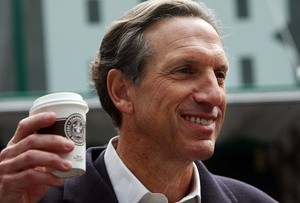Many of us at The Booth Company enjoy our coffee in the early morning, late morning, early afternoon and well…you get the point. So, it may not be a surprise for our latest leadership profile we take a closer look at someone who is behind one of the biggest names in coffee – Howard Schultz, CEO of Starbucks.
In the 1990s and early 2000s, Starbucks was one of the world’s most recognizable and successful brands. Life was easy as pie, or in Howard Schultz’s case, easy as a grande white chocolate peppermint mocha with whipped cream.
Schultz decided to step down as CEO in 2000, but he continued to serve as chairman.
Business turned sour for the coffee giant in 2008 due to a combination of the down economy and the company’s mass-market expansion.
Customer traffic dropped, employees became disenchanted, and analysts doubted if the company could recover.
Schultz returned as CEO and proclaimed that the company had “lost its way”. He stated he took “full responsibility” for the issues related to the company.
“We had to admit to ourselves and to the people of this company that we owned the mistakes that we had made,” said Schultz in an interview with the Harvard Business Review. “Once we did, it was a powerful turning point.”
Schultz and the leadership team changed the business plan, closed under performing stores, and offered new incentives for customers.
However, the main goal for the company was to rebuild trust with its customers and employees.
In 2008, Schultz took 10,000 store managers to New Orleans for a leadership conference where they spent 50,000 hours helping communities re-build the city that was still shaken from Hurricane Katrina. Schultz said volunteering was the best way to reinvigorate a return to values among the managers.
Furthermore, Schultz stated that social media helped rebuild trust. The social media tools became authentic reflections of the company’s values. Starbucks currently has more than 14 million connections on Facebook, and more than 1 million followers on Twitter.
Sales are now back up again for the coffee giant.
Schultz publicly admitted mistakes and he worked to change the problems within the company. When Schultz kept his commitment, he displayed trustworthiness and integrity to his employees.
Everyone makes mistakes. What exemplary leaders do is learn from their mistakes and incorporate the learning into making changes in the future.
Schultz demonstrated that individual accountability is an important leadership value. Leaders must accept responsibility for outcomes that arise – both positive and negative. The turnaround of Starbucks is a great example of how displaying accountability in leadership can shape and drive the culture of a company.
We would love to hear from you – so grab a cup of your favorite coffee and tell us your thoughts about Howard Schultz and leadership.

